A World of Stage: Russian Designs for Theater, Opera, and Dance
The innovation of Russian performing arts started at the end of the 19th century. There arose a quest for Russian identity as a reaction against the tasteless academic style that had been promoted by the Imperial power, and and fresh visions based on the poetic interpretation of Russian folk arts were offered in the world of stage design. This movement was succeeded by the “World of Art”members including Serge Diaghilev, and then came to full bloom in Paris as the success of his Ballets Russes, which aimed at the unification of dance, music, and visual arts.
Among the factors that prepared the flourish of Russian theatrical arts at the age of revolutions, was the rise of so-called Russian Avan-gard movement. The artists inluenced by cubists and futurists created innovative stage designs, which, along with experimental dance arrangement and stage effect, had a great impact on arts and performances all around Europe. The United States and Asia were also under their influence, as is proved by the documents and related art works now in many cities in the world.
This exhibition introduces the innovation of designs in Russian stage arts in the 20th century, through the display of about 190 items from New York, Paris, London, St.petersburg, as well as from around Japan. With the focus on sketches for costumes and stage sets, it includes real costumes, posters, brochures, photographs, and films of reenactment, to vividly present the energetic world of stage arts of that time.
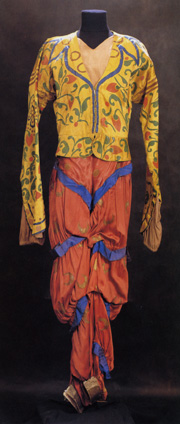
Léon Bakst (1886 - 1924) Male costume for Nikolai Rimsky-Korsakov’s ballet Schéhérazade This coutume was made for the production of Diaghilev’s Ballets Russses at the Théâtre National de l’Opéra, Paris, 1910. St.petersburg State Museum of Theatre and Music © Texts,photos, The State Museum of Theatre and Music, St.Petersburg, 2007
Aomori Museum of Art
| Address | 185 Chikano, Yasuta, Aomori, Aomori, 038-0021, Japan |
|
| TEL | 017-783-3000 | |
| bijutsukan@pref.aomori.lg.jp | ||
| Access | (JR) 20 minutes by car from JR Aomori Station (Aomori Municipal bus.) 20 min. by bus bound for “MENKYO-CENTER via Art Museum” from JR Aomori Station.The Bus Stop “Kenritsu-bijutsukan-mae” (Airport) 20 minutes by car from the Aomori Airport. (Highway) 5 minutes by car from the Tohoku Expressway Aomori Interchange |
Details
Period
2007/9/29 (SAT) – 2007/10/28 (SUN)
Hours
9:30 – 17:00
Admission
Special exhibition + Aleko Hall (*)
Adults / 800 (700) yen
High School & College & University / 560 (460) yen
Schoolchildren & Junior High School / 320 (220) yen
Special exhibition + Collection Gallery
Adults / 1,200 (1,100) yen
High School & College & University / 800 (700) yen
Schoolchildren & Junior High School / 400 (300) yen
Exhibition Structure
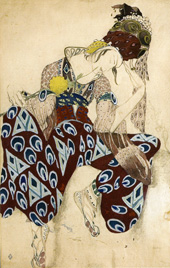
Léon Bakst (1886 - 1924)
Costume design for Vaslav Nijinsky in Serge Diaghilev’s production of Paul Dukas’s ballet La Péri, 1911
Coll. Professor Stavrovski, New York
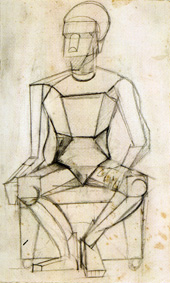
Lazar Khidekel (1904 - 1986)
Figure study for the opera Victory Over the Sun, 1920
Coll. The Khidekel Family, New York
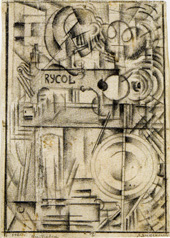
Lazar Khidekel (1904 - 1986)
Design for the opera Victory Over the Sun, 1920
Coll. The Khidekel Family, New York
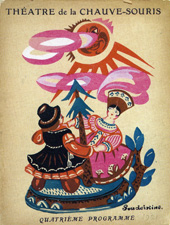
Program for Nikita Balieff’s Théâtre de la Chauve-Souris, May 1921
Cover by S.Soudeikine
Coll. Professor Stavrovski, New York
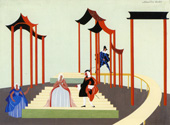
Alexandra Exter (1882 - 1949)
Design for the Stage setting of the ballet Don Juan
Victoria and Albert Museum
This design was made for the production of Anna Pavlova’s company at the Opera House, Cologne, in 1927.
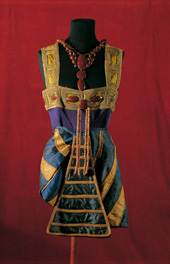
Léon Bakst (1886 - 1924)
Costume for Michel Fokine as Amoune in the ballet Egyptian Nights
This costume was made for the production at the Mariinsky Theater, 1908. Also presented by Diaghilev’s Ballets Russes at the Théâtre du Châtelet, Paris, 1909.
St.petersburg State Museum of Theatre and Music
© Texts,photos, The State Museum of Theatre and Music, St.Petersburg, 2007

